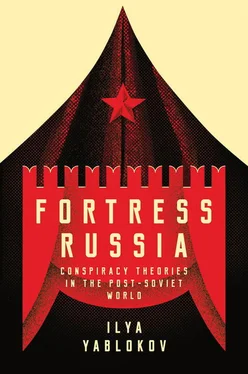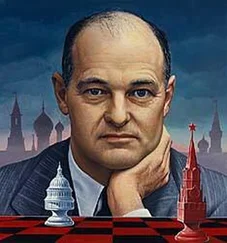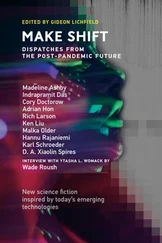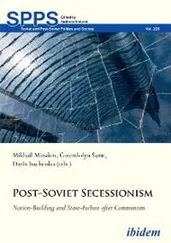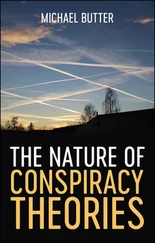The conflict in Ukraine and the annexation of Crimea in 2014 marked a watershed in post-Soviet Russian history. The Sochi Olympic Games, which were to celebrate the greatness of Putin’s Russia, closed at the same time that blood was being shed in the centre of Kyiv. A day later, the Ukrainian president Yanukovich fled to Russia, and to fill the resulting power vacuum, Ukraine installed a ‘revolutionary’ interim government. The backlash in Russia came very quickly. Within a few months, the country had been divided into ‘Us’, those who allegedly supported the Kremlin’s handling of the Ukraine crisis, and ‘Them’, those who were critical of Russia’s involvement in the conflict, and of its annexation of Crimea a couple of weeks later. Indifference was not an acceptable position; in the view of the Kremlin, either you supported the authorities and their interpretation of events, according to which they were part of a Western plan to attack Russia, or you were considered to be an enemy. The Russian authorities, along with those intellectuals who sided with them, saw the new Ukrainian leaders as ‘illegitimate Western puppets’, and insisted they had no right to try to take control of Eastern Ukraine’s rebel territories (TASS, 2014). Pro-Kremlin intellectuals regarded the Ukraine crisis as an act of war against Russia, aimed at getting rid of Putin and partitioning Russia into several puppet states under the control of the USA.
These narratives had a clear influence on public opinion; Putin’s popularity rating reached its highest in the 16 years of his rule (Cullinane, 2015). At the same time, negative attitudes towards the West (i.e. the USA and the EU) also increased enormously (Mukhametshina, 2015). Popular support for the government and public hatred of the West helped the Russian authorities to demonize the opposition and downplay its importance on the domestic political stage. Putin’s press secretary, Dmitry Peskov, called those who opposed the annexation of Crimea a ‘nano-fifth column’ supported by the West (Bershidsky, 2014), and this became a popular phrase used by many pro-Kremlin speakers to convey the idea that Western conspirators had yet again penetrated the country.
The use of a highly charged conspiratorial term by such a top-ranking politician to describe dissenting voices within the country reveals a major shift in the post-Soviet Russian conspiratorial discourse. As previous chapters demonstrated, anti-Western conspiracy theories had been gradually creeping from the margins into mainstream political discourse from 1991; but politicians of the rank of Peskov and Putin very rarely voiced conspiratorial ideas directly, leaving this job to public intellectuals and journalists. Moreover, conspiracy panics were spread tactically by the authorities, over short periods of time, in order to ensure that particular political goals were achieved. After 2014, this dramatically changed.
At the peak of the Ukraine crisis the Russian political elites, as well as the state-aligned media, started using conspiracy theories and making shameless accusations that their opponents, together with the West, were waging war against Russia. From the inception of the conflict up to late 2016, when the Russian authorities felt that the situation inside Russia had been brought under control, there was an overwhelming sense that the country was encircled by enemies (Jablokov, 2015). The events which unfolded between 2014 and 2016 revealed the entire set of ideas and methods applied by the Kremlin as part of its anti-Western conspiracy theories. After ten years of active investment in the creation of an anti-Western conspiratorial culture in Russia, the fruits of this work proved to be very useful. They reveal the huge potential that conspiracy theories have for the mobilization of Putin’s supporters and the suppression of the opposition.
The Ukraine crisis has also become a supposedly legitimate reason for ‘tightening the screws’ in domestic policies. As scholars note, this was largely carried out because of the growing economic instability and the decrease in incomes within the country; this made ‘co-opting’ the opposition (Gel’man, 2016, p. 32) and taking control of society extremely difficult. The popular revolt against the corrupt authorities in Ukraine was interpreted by the Kremlin, with good reason, as a direct threat to its own domestic security. Therefore, the wave of repressive laws against non-state political actors, which began in 2012, continued throughout the 2014–16 period. The state has carried out several reforms of the law enforcement services aimed at suppressing revolt and has imposed harsher criminal punishments for dissenters.
Such actions were, nevertheless, just part of the arsenal of tools employed by the Kremlin to keep the country under control. The most important source of power and legitimacy for authoritarian leaders nowadays is the ability to manipulate information in such a way that it allows the authoritarian ruler to survive. This is particularly clear during economic downturns, when, as Guriev and Treisman (2015) discovered, the authoritarian leader sets out to increase the flow of state propaganda. The state-aligned television channels, which are the primary source of information for most Russians, played the most significant role in the discursive division of the nation in 2014–16 (Volkov and Goncharov, 2014). During the Ukraine crisis, the statecontrolled media switched to a 24 hour ‘propaganda mode’, in which they portrayed both internal and external criticism of the authorities as part of the Western plan to destroy Russia. Hutchings and Szostek (2016) have concluded that anti-American narratives have been major plotlines in the coverage of the Ukrainian conflict on Russian television. The ‘fifth column’, ‘national traitors’ and ‘Ukrainian fascists’ became the main conspiratorial protagonists in news reports. As Borodina (2014) notes, the prolonged and aggressive anti-Ukraine campaign which has been aired continually on Russian television has pushed aside all other news stories, leaving Ukraine and the Crimea at the forefront of both domestic and international news. Less loyal media outlets were either disbanded or put under the strict control of staunch pro-Kremlin owners who had a direct impact on their news coverage (Fredheim, 2016). In spring 2014 the news broadcasts televised by the two state-aligned channels contained ten reports on Ukraine, each of which was seven to ten minutes long; the length of the news broadcasts also doubled. In other words, everything that the Russians watched on television was about Ukraine and it was presented in a way which was most favourable to the Kremlin’s political goals.
This media campaign had a particular goal: to attract people who had previously been less interested in the consumption of news produced by state-aligned channels. The steady decline in viewer numbers for these channels was dangerous for the ruling elite as it was slowly eroding support for the Kremlin, while the opposition was getting more prominent. As Rogov argues (2016), the outbreak of the war and the fact that a clear enemy was appearing on screen attracted the audiences less engaged in politics and less informed about their specifics, which in turn increased Putin’s support base among the electorate and helped mobilize the majority in his favour. As we shall see, the anti-Western conspiracy theories which were developed and disseminated over the latest fifteen years of Putin’s rule were not in vain; on the contrary, they quickly morphed into the central element of this mobilization campaign.
This chapter will be looking primarily at news reports from the weekly programme Vesti Nedeli , which from autumn 2012 was hosted by Dmitrii Kiselev. There are several reasons for this. Firstly, anti-Western conspiratorial discourse in the Russian media space became so widespread between 2014 and 2016 that it needs to be narrowed down for analysis. Secondly, in the period of the Ukraine crisis, Vesti Nedeli has been one of the most popular news shows on Russian television (Meduza, 2016b). As a consequence, and given the popularity of television in the country, the conspiratorial ideas which were produced and reproduced in the programme rapidly spread across the country. Thirdly, Dmitrii Kiselev is the central figure in Russia’s media elite (Schimpfossl and Yablokov, 2014) and has strong connections to the Kremlin. During the crisis in Ukraine he was promoted and became head of the state media holding Russia Today, which has under its umbrella the news channel of the same name; this is another prominent source of anti-Western conspiracy theories (Yablokov, 2015). The EU and the USA placed Kiselev on their sanctions list – one of the few Russian media personalities to be included – because of his active engagement in the production of anti-Western and anti-Ukrainian propaganda. All in all, this makes Kiselev and Vesti Nedeli particularly interesting cases through which to explore the conspiracy culture at the time of the Ukraine crisis.
Читать дальше
Конец ознакомительного отрывка
Купить книгу
